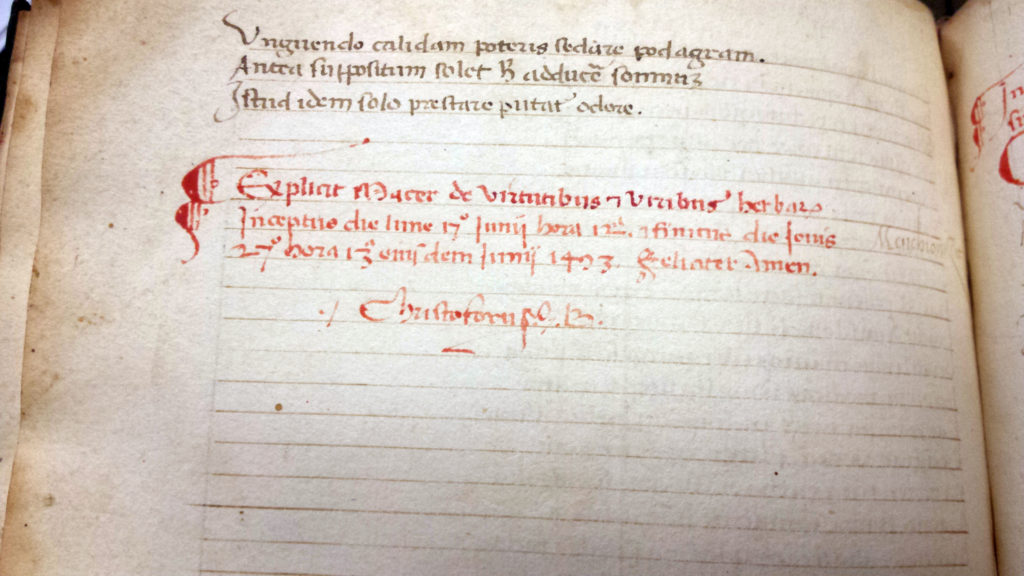Dating medieval manuscripts can be tricky, as many of them aren’t dated by the scribe, nor do we know who the scribes were. However, 10a 159, Macer Floridus’ De Virtutibus Herbarum, has both a date and a name. We even know approximately how long it took our scribe to complete each section!
Our scribe was called Christoforus B., and he marked the completion of each section with a colophon, naming the date and time he finished writing.
Christoforus began the first section, De virtutibus herbarum et aromatum, during the 12th hour of June 17, and finished Thursday the 27th of that same June (in the year 1493) during the 13th hour of the day. (f. 30v)
Expilicit Macer de virtutibus et viribus herbare
Inceptus die Iune 17^o hora 12^a. et finitus die Iovis
27^o hora 13^a euisdem Junii 1493. Feliciter amen.
Christoforus B.
He finished the second section, Versibus exametris de virtutibus et potentiis specierum sive aromatum, just 7 hours after the first section: during the 20th hour of Thursday, June 27, 1493. (f. 34r)
Explicit Macer de proprietatibus
seu viribe virtutibusque specierum.
Inceptus die Jovis 27. hora
13 Junii et finitus eodem er die
hora 20^a 1493. Feliciter.
Christoforus B.
The third and fourth sections of the text include the Dieta by Theodorus Priscianus and approximately 35 medicinal recipes. These Christoforus finished on Friday, July 5, 1493. Peter Kidd noted in his A Descriptive Catalogue of the Medieval Manuscripts in the Library of the College of Physicians, Philadelphia that the meaning of the third colophon is unclear as the feast of St. Margaret the Virgin martyr is traditionally celebrated on July 20. (f. 40v)
Explicit quicquid boni invenere
potui ad scribendum. Die veneris
5^o Julii. 8. infesto gloriose virgine
et maternis Margarite. hora 13. 1493.
Christoforus B.
So who was Christoforus? It is likely he was a monk, but without further identifying details (like the name of a local saint or perhaps a monastery), it’s likely we’ll never know. However, thanks to Christoforus, this is one manuscript we can date with certainty.



